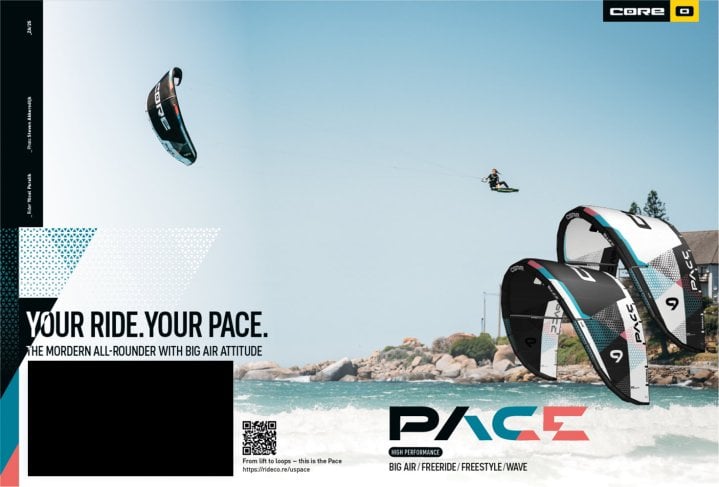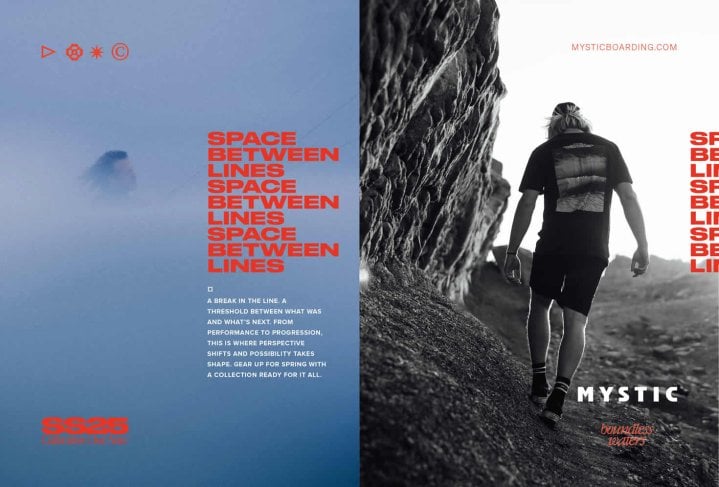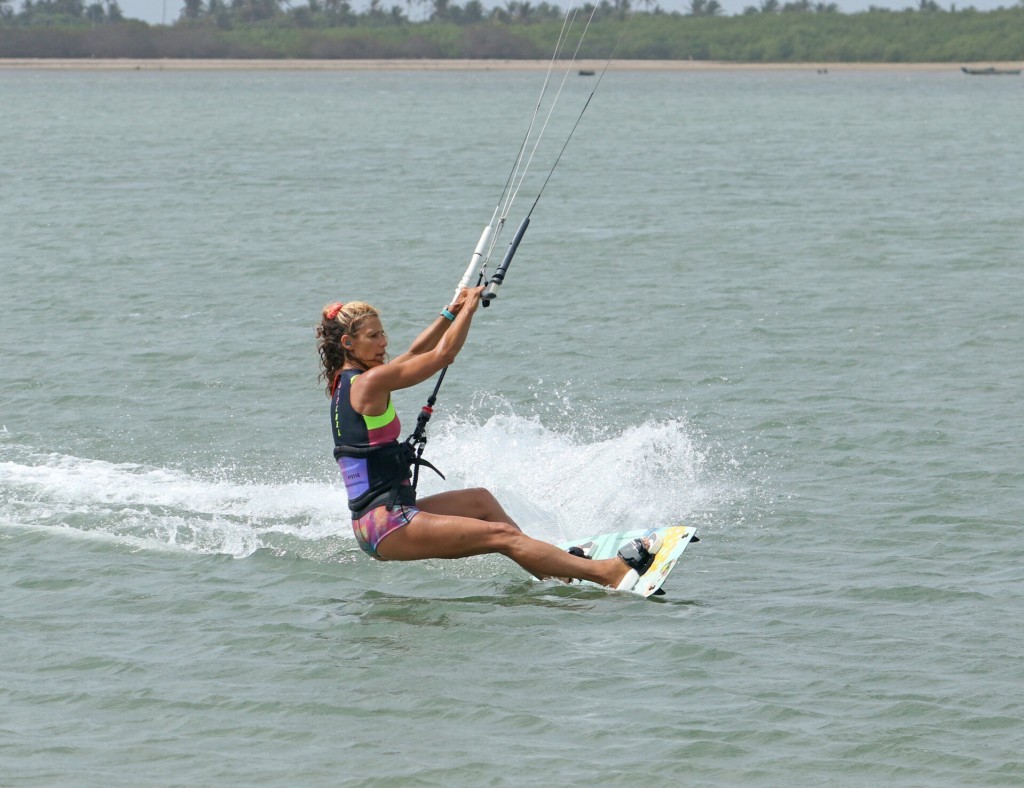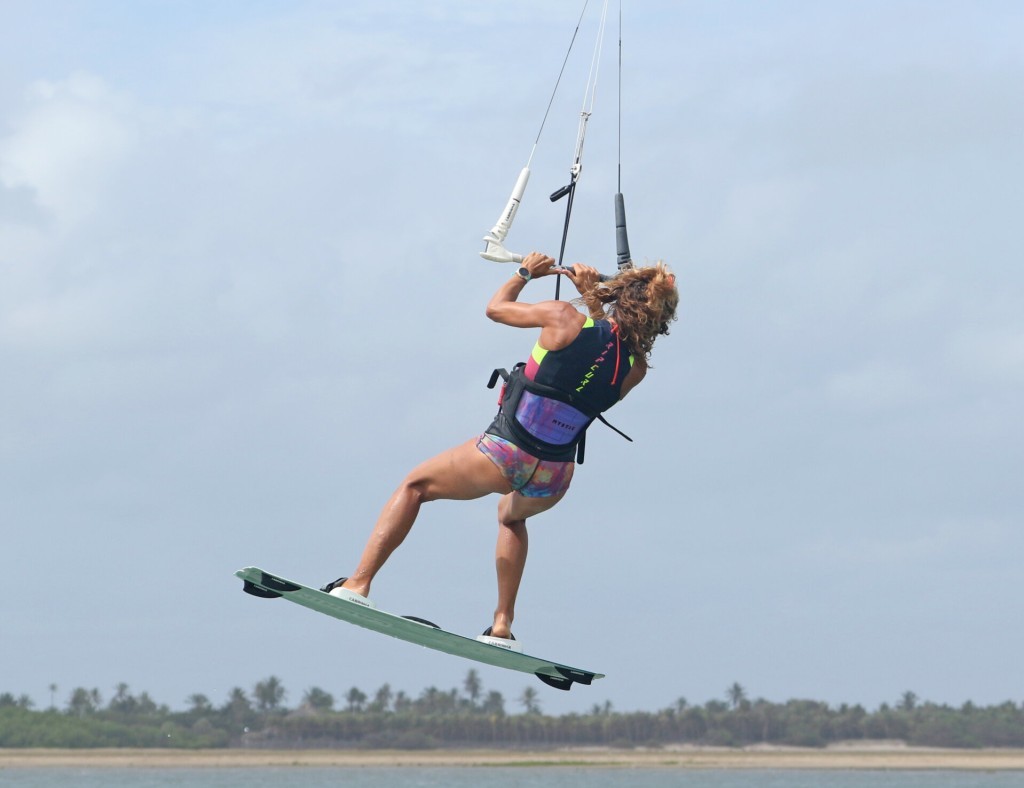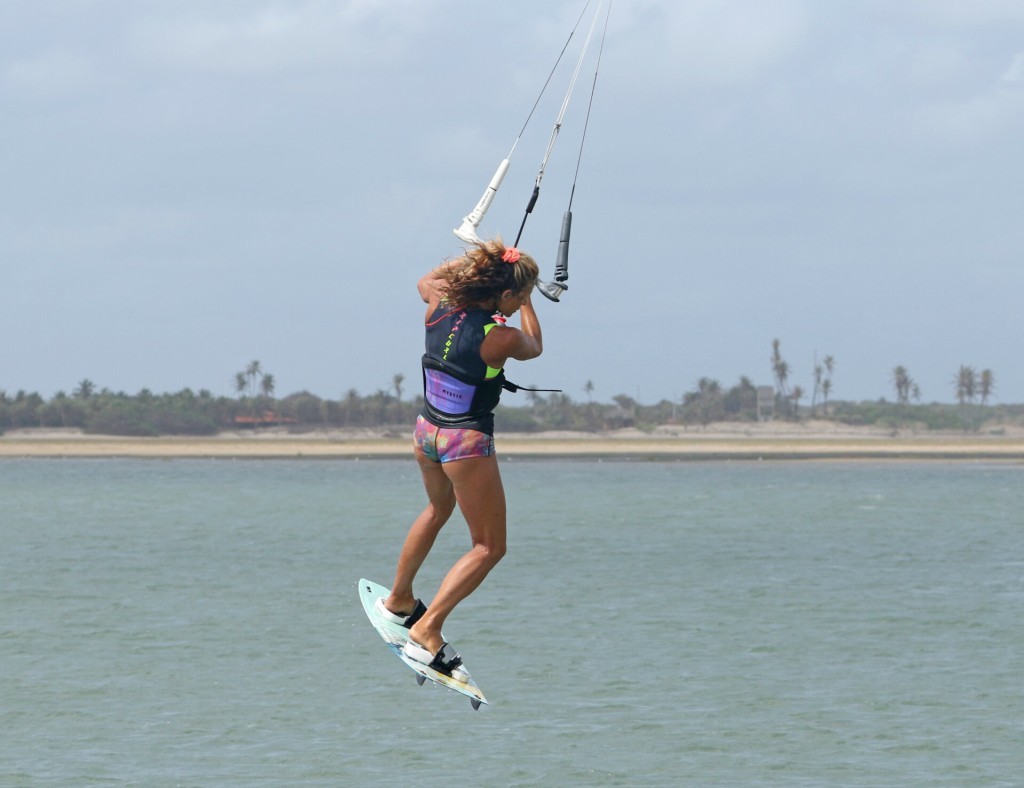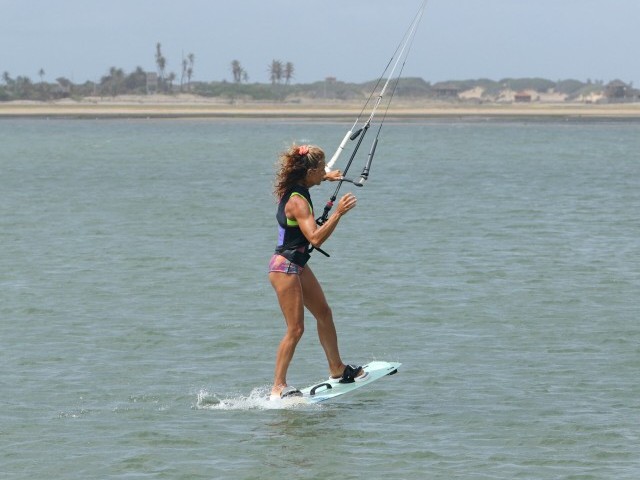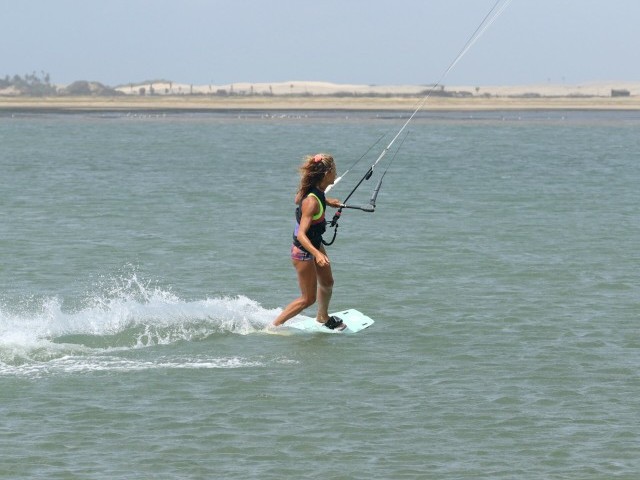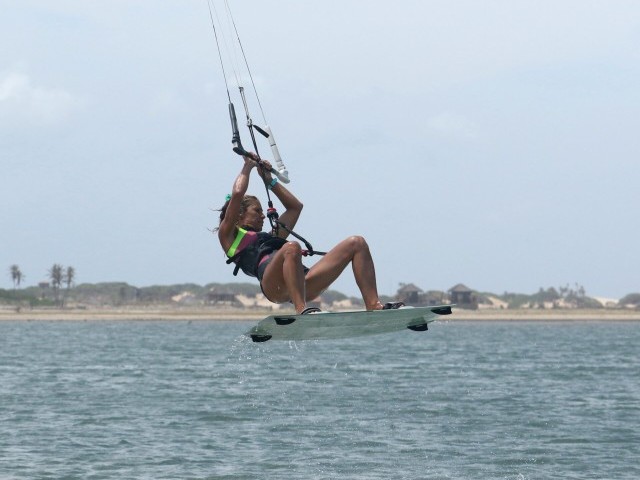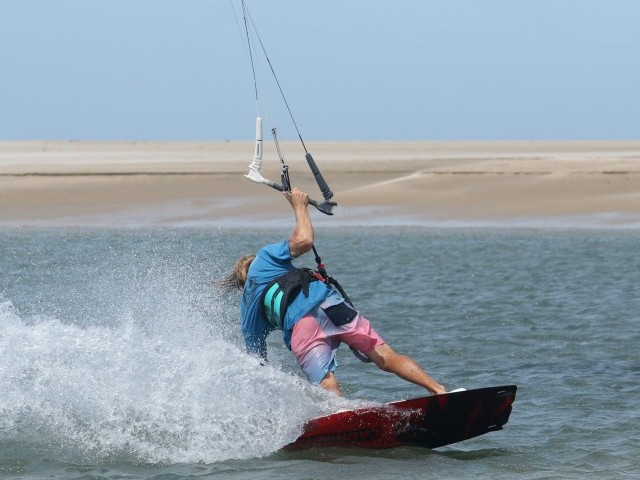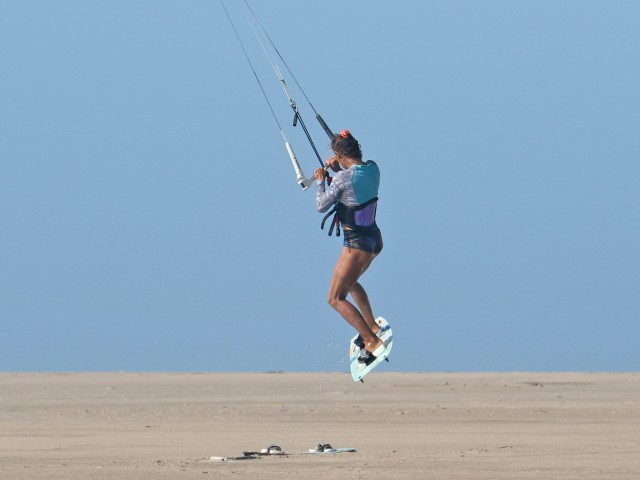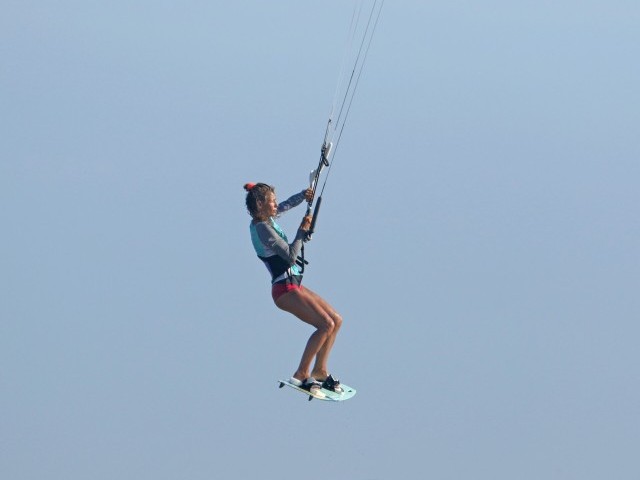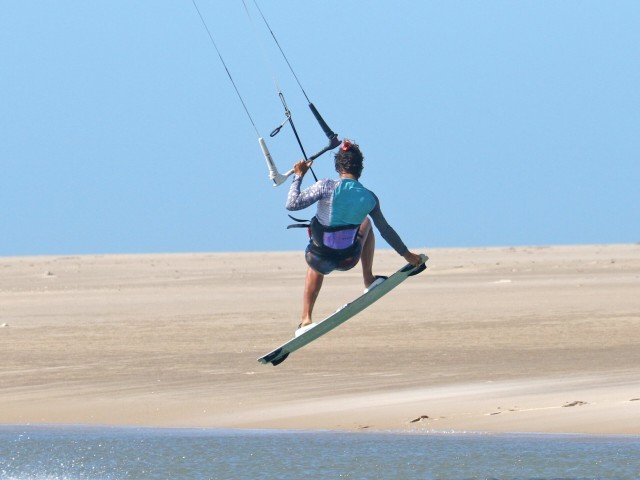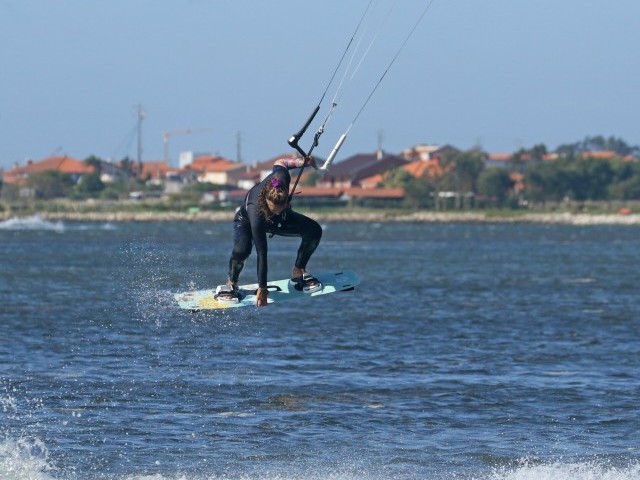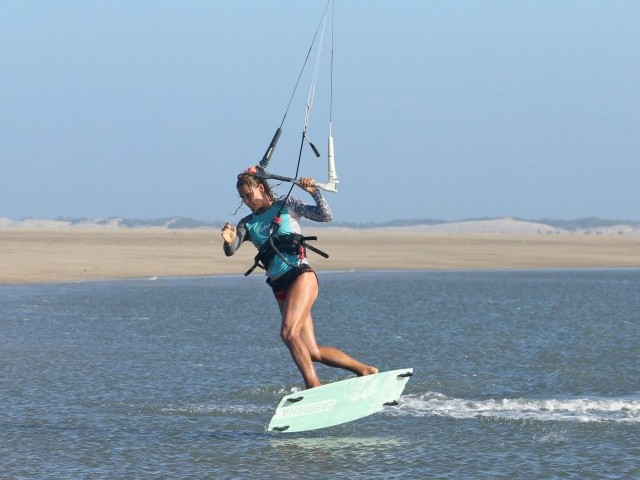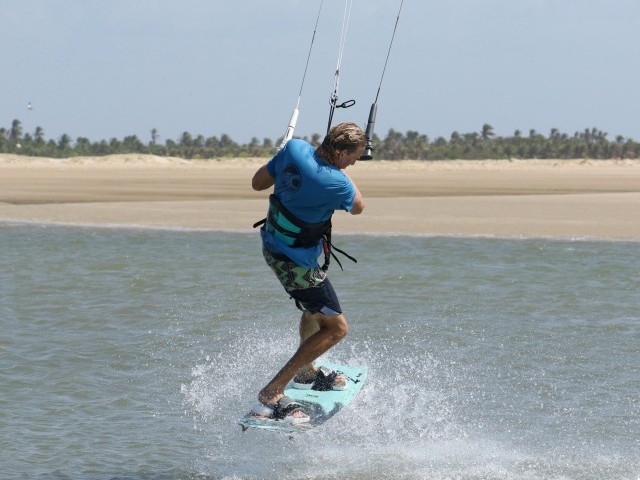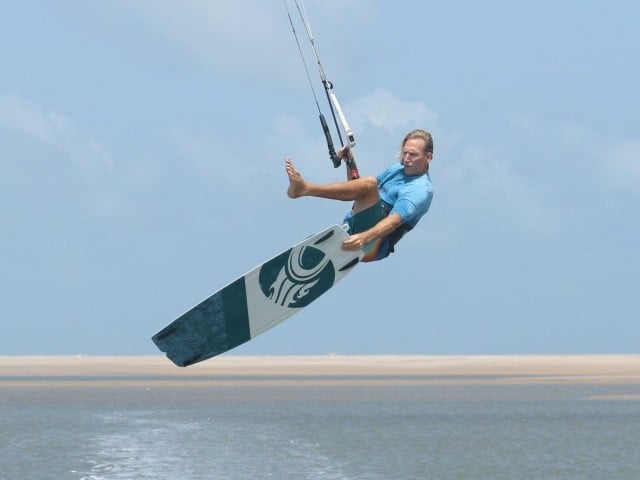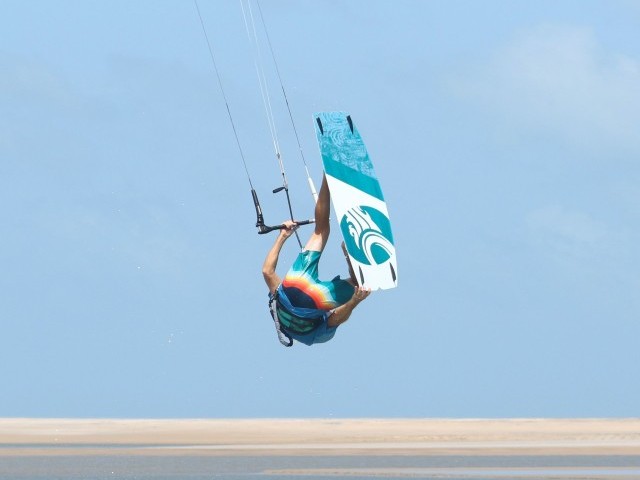
Back Roll to Toeside Sent Jump
Technique / Intermediate
The sent back roll to toeside is not a move you’ll see often. You’ll frequently see its namesake popped and many hybrid variations, too. However, we’re going to look at this jumped variant, using the kite for height, as it will serve you very well for one of our next learning to loop releases in the not-too-distant future. Spoiler alert! If you have your mind set on nailing a back roll down loop transition, you need this one stuffed firmly into your bag of tricks! OK, so the carrot has been officially dangled. We’re sure you won’t be surprised to hear that having a sent back roll is the pre-requisite for this toe-side landing. However, you’ll be pleased to hear that this one doesn’t differ much; it is a matter of adding a toeside landing onto your sent back roll!
Right, enough of the jibber jabber. Let’s have a little run-through of the back roll and see how we’re going to stomp it to the toeside.
Approach and Send Pic A.
Your aim is for a floaty back roll; we’re not looking for huge, but instead controlled with a slow rotation. Approach as you usually would, and have a good check to ensure the coast is clear with your kite at the edgeable 11 or 1 o’clock and a comfortable speed on an upwind edge. Position your hands centrally on the bar. Send your kite, keep edging, and feather the bar out to follow the sweet spot before leveling the bar to stop your kite going much past 12. You can see that Karine has come in for her back roll, as usual. She must feather her bar out to turn the board further upwind before take-off. She’s not leaning back and keeping her back leg stiff even though it’s flexed.
Take Off Pic B.
A lot happens here at the takeoff. You’ve got to get up off the water, initiate your rotation and control your kite. Extend your back leg hard to initiate take-off, and kick yourself up and off the water. Use your entire body from foot to head to extend up. At the same time, turn your shoulders and twist your trunk to follow on from the carve and rotate upwind. Once you’re extending, you can pull the bar in for lift. Looking at Karine, you can see that she’s kicked herself up, extending full. She’s twisting her trunk to initiate her rotation, and her shoulders are still pretty parallel with the water, so she hasn’t leant back! As she rises, she pulls the bar in for some extra oomph and keeps it level to stop the kite from travelling further back. Karine is looking forward; she hasn’t thrown her head into the rotation, she can see her hands, and she’ll keep it nice and slow.
Get Your Bearings Pic C.
Once you are up and rotating, get your knees up to keep yourself balanced. It’s still a sent back roll, so all the same rules apply. Concentrate on keeping the kite just behind 12 o’clock, and once you pass upwind, turn your head and look over your shoulder to see where you are. You’ll know where and when you’ll land by leading with your eyes. Keep your knees up and the kite slightly back if you’re still high. Here Karine is balanced and floating. She’s turned her head and looks downwind, waiting to float down.
Coming Down Pic D.
Let’s preface this by repeating what we said at the beginning. A back roll to the toeside is a back roll with a toeside landing added. We can expand this by adding it at the very last second. Your aim is to come down as you would if you were planning to land heelside, pointing downwind and over your board. With this in mind, look at Karine as she starts to descend. She’s got her bar on the sweet spot and has started to steer her kite gently forward, to get past 12. She focuses on where she thinks she’ll land as she does this. It’s like her back roll; nothing new to see here… yet!
Dive and Drop Pic E.
Once you know you’ll soon be landing, it’s time to dive the kite for some downwind pull and drop your undercarriage so you can land over the board. Now is the time for change. Bring your back leg through as you dive your kite and drop your legs. If you turn your shoulders a touch first, you can twist your hips, lift your back knee underneath you, and point the board downwind. Keep your bar on the sweet spot. If you let it out and give away the tension, you’ll potentially turn too far. Here Karine dives her kite, turns her head, shoulders, and waist, and then brings her rear foot through, focusing on where she’ll land.
Stomp It Pic F.
With the kite pulling, you should find yourself following it. The more you dive, the simpler it’ll be to land downwind. Turning your body and bringing the rear leg forward has the benefit of lifting your new front foot, making for an achievable tail-first landing over the board. You can release your front hand to stay balanced as you touch down. You can see that Karine is pointing downwind, following the kite’s pull. She’s released her front hand and lands neatly, tail first over a flat board.
Edge Pic G.
Once you’re balanced and happy, turn upwind and get onto your toeside edge. As soon as you’re edging, you can control the kite and stop it flying down from your initial dive. Karine turns upwind onto her toes!
Top Tips
Without wanting to oversimplify this move, it is a single back roll with a toeside landing. This means you must approach it as such, even as far as the landing goes. Start your dive as if you’re landing typically, and as the pull comes, bring the rear leg through. The problems start when you try to rotate to toe side.
With this in mind, perhaps the toeside is also slightly misleading. As you can see from the photos, Karine is actually landing downwind and on a flat board. There’s no toeside edge, and this is why you don’t need any extra beans on the back roll.
As long as you rotate slowly and try this so you’ll land on your preferred toeside, you need only focus on the landing.
Excellent. Look at the sequence and watch the video to see it play out in real time.
Common Problems
If you’re landing and catching your heels, it’s a sign of two problems. Firstly, you’re over-rotating. This can be giving too much in the take-off phase or not diving the kite. Without the pull, there’s nothing to guide you. Don’t throw your head when you take off, and be positive on the bar for your dive.
Suppose you’re landing pointing downwind with all your weight on your heels, making it hard to turn back upwind onto your toeside edge. This often happens if you’re dropping hard into your landing. This can result from letting the bar out or diving too early while still high. Be patient and keep some tension.
Keystones
- Take off for a slow rotation
- Knees up and wait
- Spot landing and dive kite
- Drop the board and bring back the leg through
- Land downwind overboard before carving up.
This technique article was in Issue 110 of IKSURFMAG.
Related
By Christian and Karine
Christian and Karine have been working together as a coaching team, running improver to advanced kitesurfing clinics since 2003.



